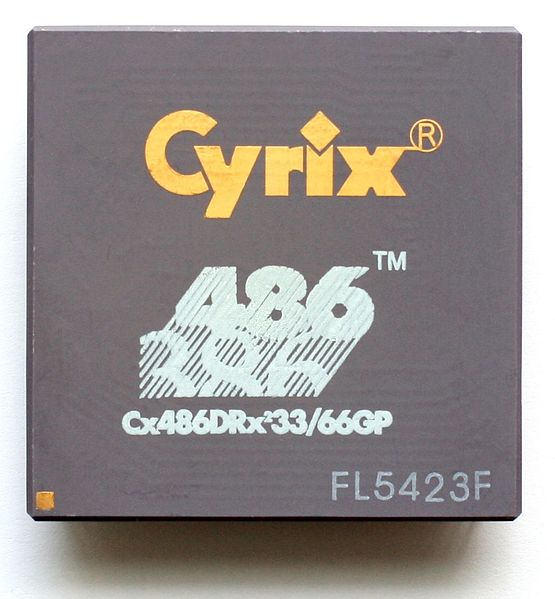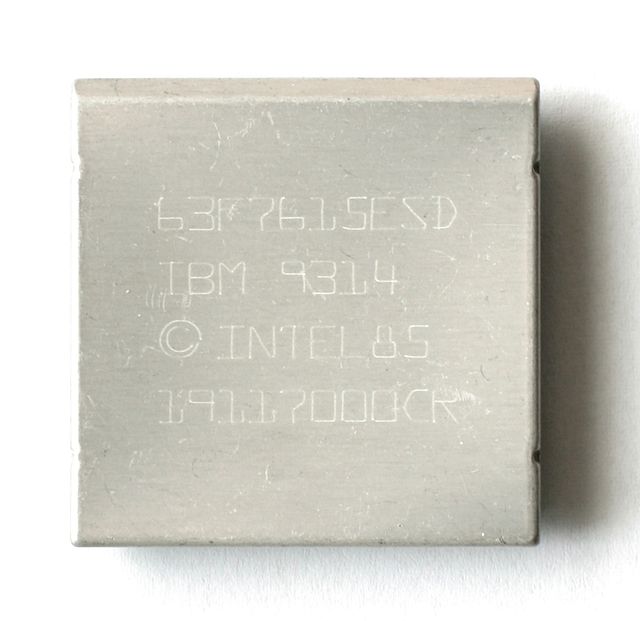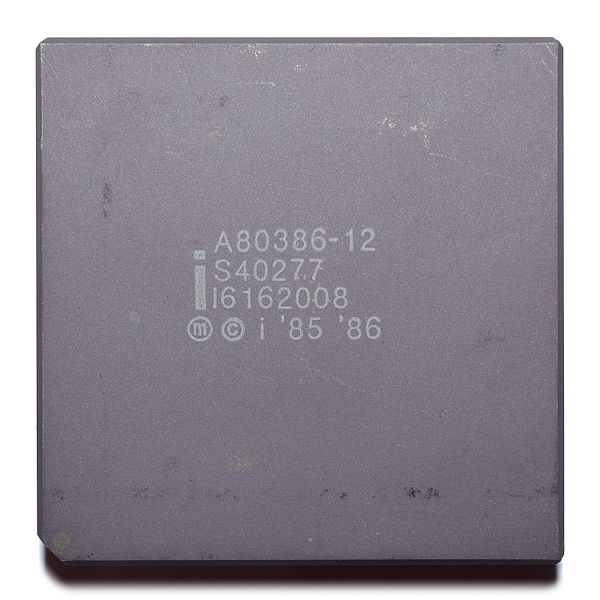The Intel 486, officially named i486 and also known as 80486, is a microprocessor. It is a higher-performance follow-up to the Intel 386. The i486 was introduced in 1989. It represents the fourth generation of binary compatible CPUs following the 8086 of 1978, the Intel 80286 of 1982, and 1985's i386.
The exposed die of an Intel 486DX2
STMicroelectronics' ST ST486DX2-40
UMC Green CPU U5SX
Cyrix Cx486DRx²
The Intel 386, originally released as 80386 and later renamed i386, is a 32-bit microprocessor designed by Intel. The first pre-production samples of the 386 were released to select developers in 1985, while mass production commenced in 1986. The processor was a significant evolution in the x86 architecture, extending a long line of processors that stretched back to the Intel 8008. The 386 was the central processing unit (CPU) of many workstations and high-end personal computers of the time. The 386 began to fall out of public use starting with the release of the i486 processor in 1989, while in embedded systems the 386 remained in widespread use until Intel finally discontinued it in 2007.
An Intel i386DX 16 MHz processor with a gray ceramic heat spreader
Intel A80386DX-20 CPU die image
Intel i386 packaged by IBM
A very early 80386 at 12 MHz (A80386-12), before the 32-bit multiply bug was found








